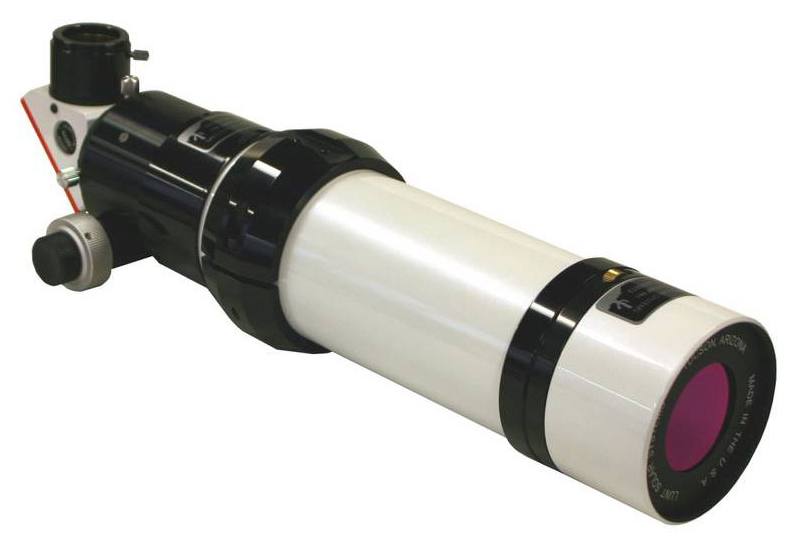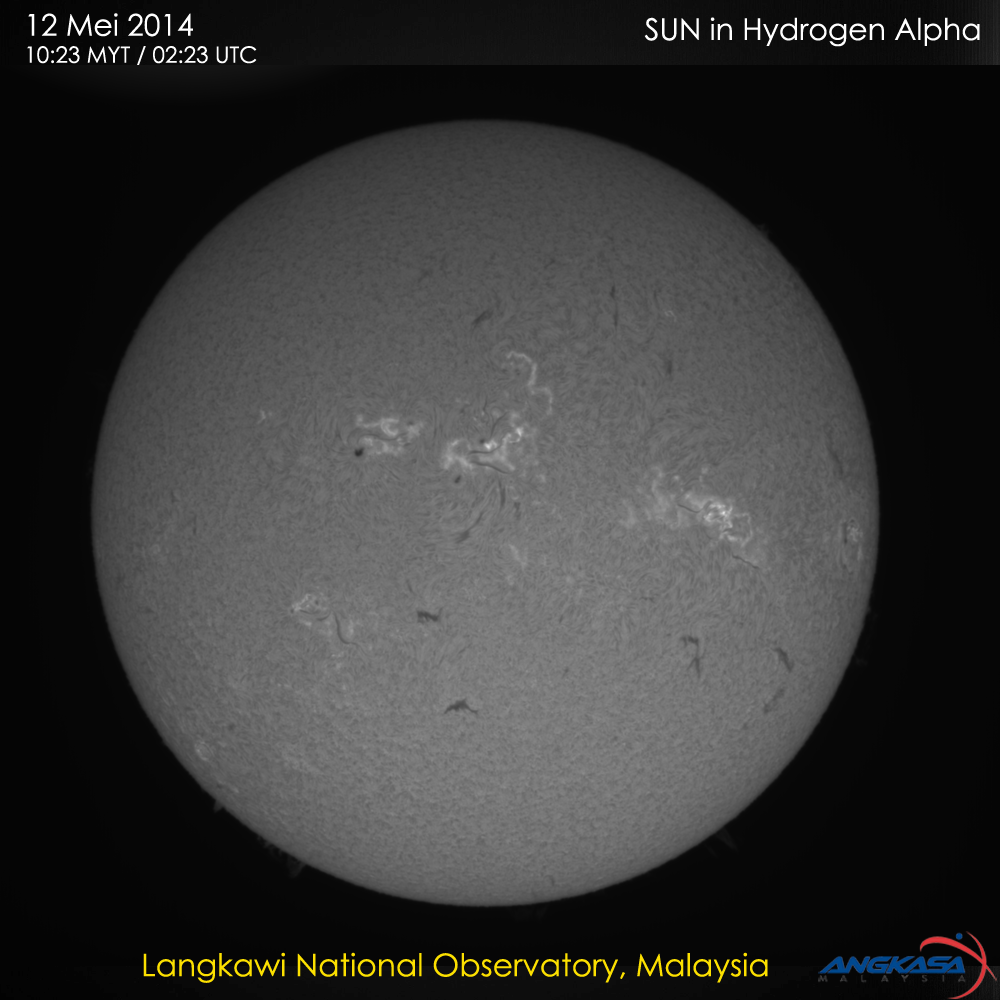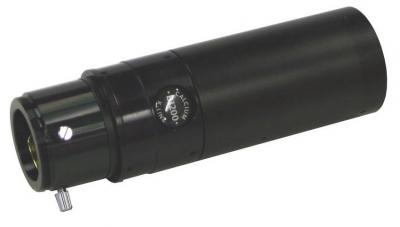The TMB 152/1200 APO and other telescopes on Paramount-ME as viewed inside the LNSO Dome |
1. Baader Astro Solar Filter ND3.8 (Photography) & ND5.0 (Visual)
These filters are used with our TMB152/1200 telescope for daily White Light (sunspot) observations. Due to the sensitivity of our CCD, we use the ND5 to reduce the sun's brightness further. This filter is diffraction free and produce consistent results. However, we do replace it annually to ensure safety of our instruments as they do degrade with daily use.
This new high-strength polymer solar filter produces a high contrast, scatter-free and diffraction-limited image. To produce this special film, the manufacturer uses a patented high-temperature process, similar to annealing, to eliminate internal strains.The material is then ion implanted and metallized with a tough, color-neutral layer on both sides of the film. This ion implantation/metallization process (also patented), produces a high-contrast film that stands up to considerable abuse, unlike the metallized mylar materials used in virtually every other commercial solar filter today. The coating cannot easily be rubbed off, and in that respect is actually safer than coated glass filters. The material is coated on both sides, even if you find a pinhole on one side, it is likely that the other side is still coated, providing the protection of that single layer. Since it is nearly impossible for any manufacturer to produce filter coating that is absolutely pinhole-free, a few pinholes may be found.
Unlike commercial film and glass filters, Baader's AstroSolar™ will not significantly degrade the imaging capabilities of telescope. Roland Christen of Astro-Physics has checked out samples of this material on a double-pass interferometer and measured a 94% Strehl Ratio when placed flat over a 6" test optic. Compare this to Strehl ratios of 45% for aluminized Mylar and less than 24% for inexpensive glass solar filters.
BAADER AstroSolar™: ND 5 for visual and ND 3.8 for photography
Performance
This filter produce almost neutral color on the surface, and the black background sky due to the lack of scatter and few, if any, pinholes. The extensive solar granulation all over the surface, as in any high-resolution glass filter was seen. Sunspots showed detail deep within the umbra and the penumbral brushes were so finely resolved, they looked like eyelashes. But what surprised most was that white filamentary faculae all over the sun's surface was seen, not just at the edge.

Image of The Sun at LNO (8th June 2014) using Baader Astrosolar Filter
2. Daystar Quantum PE (0.5A) Hydrogen-Alpha Filter
The Quantum PE series filtering system is designed for serious research programs requiring full aperture spectral uniformity. Systems are fabricated from the finest optical and filtering components available, manufactured by DayStar. The filter that LNO uses is of 0.50Å bandpass.
Technical specification
- Clear and usable aperture: 32 mm. (1.25").
- Bandwidth measurement: Full aperture 32 mm. (1.25").
- Fully blocked transmittance: 4%-10% of polarized light. Lower values correspond to narrower bandwidth filters.
- Spectral uniformity: The peak wavelength of any 12 mm. dia. area shall be within ± 0.05 ångström of the full aperture wavelength measurement.
- Off-band rejection: Average optical density is greater than 6.0 from X-ray to beyond 2.0 m .
- Optical components: BK-7 grade A, fine annealed 60-40 scratch-dig. Each optical element other than the etalon has a maximum wave front distortion of 1/4l @ 5461Å Hg.
- Air-glass interfaces are V-coated for a maximum of 0.2% reflectance per surface at the designed wavelength.
- Wavelength bandpass: 0.50Å
3. Lunt LS60THa Hydrogen-Alpha Filter (Telescope)
4. Lunt 2" Straight Through Calcium-K Solar Filter






